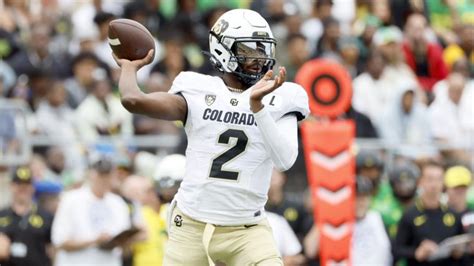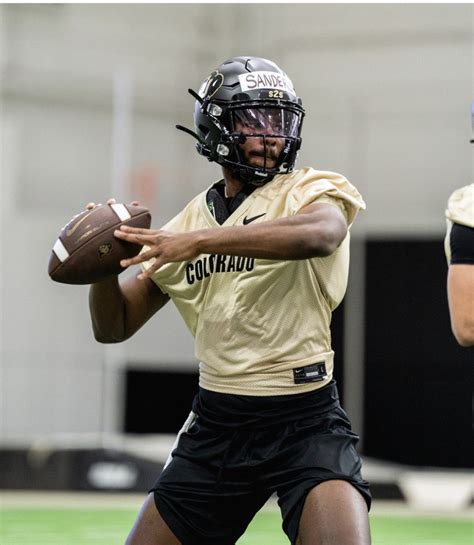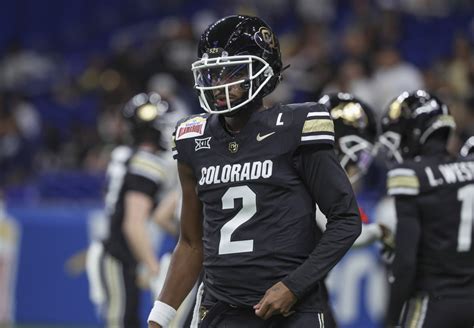
John Salley, a key member of the Detroit Pistons’ “Bad Boys” era, remains steadfast in his disagreement with the team’s strategy employed during the 1991 Eastern Conference Finals against Michael Jordan and the Chicago Bulls. More than three decades later, Salley maintains his opposition to the physical, often brutal, tactics that defined that series, stating, “Didn’t agree then, don’t now.”
Salley Still Opposes ’91 Pistons Strategy: “Didn’t Agree Then, Don’t Now”
John Salley, a four-time NBA champion and vital component of the Detroit Pistons’ infamous “Bad Boys” teams, continues to voice his dissent regarding the strategies implemented during the 1991 Eastern Conference Finals against Michael Jordan and the Chicago Bulls. The series, notorious for its physicality and the Pistons’ “Jordan Rules,” saw Detroit sweep the Bulls in 1990 but then suffer a sweep themselves the following year, culminating in the infamous walk-off incident where the Pistons, facing elimination, left the court before the game concluded.
Salley’s recent comments underscore his long-held reservations about the extreme measures taken by the Pistons to contain Jordan. Despite the team’s success using these methods in the past, particularly in the 1989 and 1990 playoffs, Salley has consistently expressed discomfort with the level of physicality and the tactics employed. This perspective offers a contrasting viewpoint to the more widely accepted narrative of the “Bad Boys” as a unified front against the league’s rising superstar.
“Didn’t agree then, don’t now,” Salley reiterated, reflecting his enduring stance on the issue. His statement highlights a moral and ethical conflict within the team’s dynamics, revealing a complexity often overlooked in the retelling of the “Bad Boys” legacy. Salley wasn’t the only member with reservations, but his willingness to speak out about it distinguishes him from some of his contemporaries.
The “Jordan Rules,” a defensive strategy designed to neutralize Jordan’s scoring prowess, involved aggressively funneling him towards specific areas of the court, double-teaming him relentlessly, and employing a high degree of physical contact. While some viewed it as a legitimate, albeit extreme, competitive tactic, Salley perceived it as crossing a line. He has always maintained that while he respected the competitive drive of his teammates, he felt the tactics employed at times went beyond what was acceptable within the spirit of the game.
The 1991 series marked a turning point in NBA history, signaling the end of the Pistons’ reign and the beginning of the Bulls’ dynasty. Chicago’s victory paved the way for their first NBA championship and the start of their dominant run in the 1990s. For the Pistons, the loss represented the dismantling of a championship team and a transition into a new era.
The walk-off incident further cemented the series’ place in NBA lore. With the Bulls clearly on their way to victory, several Pistons players, including Isiah Thomas, walked off the court before the final buzzer, refusing to shake hands with the Bulls. This act was widely criticized as unsportsmanlike and a display of poor sportsmanship, further tarnishing the “Bad Boys” image. Salley, while present, has offered nuanced commentary on the incident over the years.
Salley’s continued opposition to the “Jordan Rules” provides a valuable perspective on a controversial chapter in NBA history. It raises questions about the boundaries of competitive strategy, the ethical considerations of physical play, and the long-term impact of these events on the legacies of both the Pistons and the Bulls. His willingness to challenge the prevailing narrative encourages a more critical examination of the “Bad Boys” era and its place in basketball history.
The Detroit Pistons of the late 1980s and early 1990s were known for their aggressive, physical style of play, earning them the nickname “Bad Boys.” Led by players like Isiah Thomas, Joe Dumars, Dennis Rodman, and Bill Laimbeer, the Pistons embraced a defensive-minded approach that often bordered on the excessive. This strategy proved highly successful, as they won back-to-back NBA championships in 1989 and 1990, defeating teams like the Los Angeles Lakers and the Portland Trail Blazers.
However, their rivalry with Michael Jordan and the Chicago Bulls became one of the defining storylines of the era. The Pistons consistently stymied Jordan and the Bulls in the late 1980s, employing the “Jordan Rules” to limit his effectiveness. These rules, which involved aggressive double-teaming and physical play, frustrated Jordan and prevented the Bulls from reaching the NBA Finals.
The Bulls, under the guidance of coach Phil Jackson, eventually learned to overcome the “Jordan Rules.” By improving their teamwork, ball movement, and offensive strategies, they were able to exploit the weaknesses in the Pistons’ defense. The 1991 Eastern Conference Finals marked a turning point, as the Bulls swept the Pistons and advanced to the NBA Finals, where they defeated the Los Angeles Lakers to win their first championship.
The aftermath of the 1991 series was filled with controversy, primarily due to the Pistons’ walk-off incident. The decision to leave the court before the game ended was widely criticized as a sign of disrespect and poor sportsmanship. While some defended the Pistons’ actions as a display of frustration and competitiveness, others viewed it as a black mark on their legacy.
Salley’s continued opposition to the Pistons’ strategy highlights the complex dynamics within the team and the different perspectives on their approach to the game. While some players fully embraced the “Bad Boys” mentality, others had reservations about the level of physicality and the tactics employed. Salley’s willingness to speak out about his concerns provides a valuable insight into the ethical considerations of competitive sports and the long-term impact of these events.
The legacy of the “Bad Boys” Pistons remains a topic of debate among basketball fans and historians. Some admire their toughness, resilience, and willingness to do whatever it took to win. Others criticize their excessive physicality and unsportsmanlike conduct. Regardless of one’s perspective, there is no denying that the Pistons left a lasting impact on the NBA and helped shape the league’s competitive landscape.
Salley’s perspective adds nuance to this narrative. He acknowledges the team’s success but questions the means by which it was achieved. His stance forces a re-evaluation of the “Bad Boys” image, suggesting that not all members were entirely comfortable with the team’s aggressive tactics. This internal conflict provides a more complex and human portrayal of a team often portrayed as a monolithic entity.
The “Jordan Rules” themselves were not a universally accepted strategy, even within the Pistons organization. While coach Chuck Daly and key players like Isiah Thomas and Bill Laimbeer were strong proponents, others, like Salley, harbored doubts. The rules were designed to exploit Jordan’s tendencies and force him into uncomfortable situations. This involved directing him towards his weaker left hand, double-teaming him as soon as he entered the paint, and delivering hard fouls to discourage him from driving to the basket.
The effectiveness of the “Jordan Rules” is undeniable, as they helped the Pistons defeat the Bulls in the playoffs in 1988, 1989, and 1990. However, the strategy also came at a cost. It often resulted in physical and sometimes dangerous plays, leading to injuries and confrontations. Critics argued that the “Jordan Rules” crossed the line between aggressive defense and outright dirty play.
Michael Jordan eventually found ways to overcome the “Jordan Rules.” By improving his passing, court awareness, and overall offensive game, he was able to exploit the double-teams and create opportunities for his teammates. The Bulls also added key players like Scottie Pippen and Horace Grant, who provided Jordan with additional support and scoring options.
The 1991 Eastern Conference Finals marked a turning point in the rivalry between the Bulls and the Pistons. Chicago swept Detroit, signaling the end of the “Bad Boys” era and the beginning of the Bulls’ dynasty. The series was notable for the Pistons’ walk-off incident, which further cemented their reputation as a team willing to do anything to win, even if it meant sacrificing sportsmanship.
Salley’s continued opposition to the Pistons’ strategy underscores the enduring impact of these events. His perspective serves as a reminder that even within a successful team, there can be differing opinions and ethical concerns. The “Bad Boys” Pistons were a complex and controversial team, and their legacy continues to be debated and analyzed to this day.
The NBA has evolved significantly since the “Bad Boys” era. The league has implemented stricter rules to protect players and discourage excessive physicality. Flagrant fouls are now penalized more severely, and the league has taken steps to reduce the risk of injuries. As a result, the game is now faster, more offensive-minded, and less physical than it was in the late 1980s and early 1990s.
However, the legacy of the “Bad Boys” Pistons continues to resonate with fans and players alike. Their toughness, resilience, and willingness to challenge the status quo have earned them a place in NBA history. While their tactics may be viewed as controversial by some, their success on the court is undeniable.
Salley’s willingness to speak out about his concerns adds a valuable dimension to the story of the “Bad Boys” Pistons. His perspective challenges the traditional narrative and encourages a more nuanced understanding of the team’s dynamics and legacy. By questioning the ethical implications of their strategy, he prompts a broader discussion about the boundaries of competitive sports and the importance of sportsmanship.
In conclusion, John Salley’s continued opposition to the Detroit Pistons’ strategy during the 1991 Eastern Conference Finals highlights the complex and controversial legacy of the “Bad Boys” era. His perspective underscores the enduring impact of these events and prompts a re-evaluation of the team’s dynamics and the ethical considerations of their approach to the game. While the “Bad Boys” Pistons achieved remarkable success, their tactics remain a topic of debate and discussion, and Salley’s voice serves as a reminder that even within a successful team, there can be differing opinions and ethical concerns. His stance encourages a more critical and nuanced understanding of this pivotal chapter in NBA history.
The impact of the “Jordan Rules” extended beyond just individual matchups; it shaped the entire offensive philosophy of opposing teams. Teams had to develop strategies to counter the constant double-teaming and physical pressure applied to Jordan. This often involved increased ball movement, reliance on other scoring options, and a greater emphasis on three-point shooting to spread the floor. The “Jordan Rules” forced teams to adapt and evolve, contributing to the overall evolution of NBA offensive strategies.
Furthermore, the physical style of play employed by the Pistons had a significant impact on player health and longevity. The constant pounding and hard fouls took a toll on players, leading to injuries and shortened careers. While the NBA has since implemented stricter rules to protect players, the “Bad Boys” era serves as a reminder of the physical demands and risks associated with professional basketball.
The psychological impact of the “Jordan Rules” on Michael Jordan should also not be underestimated. The constant physical harassment and double-teaming were designed to frustrate and demoralize him. However, Jordan used this as motivation, pushing himself to improve his game and develop new skills to overcome the Pistons’ defense. His ability to adapt and persevere in the face of adversity is a testament to his mental toughness and competitive spirit.
The rivalry between the Pistons and the Bulls transcended basketball; it became a cultural phenomenon. The two teams represented different styles of play, different philosophies, and different attitudes. The Pistons were seen as the blue-collar underdogs, while the Bulls were the glamorous upstarts. This clash of cultures fueled the intensity of the rivalry and captured the imagination of fans around the world.
The 1991 Eastern Conference Finals marked a passing of the torch from the Pistons to the Bulls. Chicago’s sweep of Detroit not only ended the “Bad Boys” era but also ushered in a new era of Bulls dominance. The Bulls went on to win six NBA championships in the 1990s, cementing their place as one of the greatest dynasties in NBA history.
The Pistons, on the other hand, entered a period of rebuilding and transition. The team’s core players aged, and the “Bad Boys” era came to an end. While the Pistons eventually returned to prominence in the 2000s, winning another championship in 2004, they never quite recaptured the same level of success as they had in the late 1980s and early 1990s.
Salley’s continued opposition to the Pistons’ strategy reflects a broader debate about the ethics of winning at all costs. While some argue that any means are justified in the pursuit of victory, others believe that there are limits to what is acceptable. Salley’s stance highlights the importance of sportsmanship and ethical conduct in professional sports.
The “Bad Boys” Pistons remain a complex and controversial team, and their legacy continues to be debated and analyzed. Their success on the court is undeniable, but their tactics have been criticized by many. Salley’s willingness to speak out about his concerns adds a valuable dimension to the story and encourages a more nuanced understanding of this pivotal chapter in NBA history.
The principles behind the “Jordan Rules” can still be seen, in modified forms, in modern NBA defenses. Teams still attempt to funnel offensive players towards their weaker hands, double-team star players in key situations, and use physicality to disrupt offensive rhythm. However, the league has become far more sensitive to player safety, and the extreme levels of physicality that characterized the “Bad Boys” era are no longer tolerated. The modern NBA emphasizes skill, athleticism, and offensive creativity, while still valuing strong defense. The balance has shifted, but the echoes of the “Jordan Rules” can still be heard.
The ripple effects of the Pistons-Bulls rivalry also extend to coaching philosophies. The success of Phil Jackson’s triangle offense, which emphasized ball movement, player empowerment, and a collective approach, stands in stark contrast to the more isolation-heavy, star-dependent offenses that were prevalent in the 1980s. Jackson’s success with the Bulls and later with the Los Angeles Lakers helped to popularize the triangle offense and influence a generation of coaches.
The media landscape surrounding the NBA has also changed dramatically since the “Bad Boys” era. The rise of 24/7 sports networks, social media, and player-driven content has given fans unprecedented access to the league and its players. This increased scrutiny has made it more difficult for teams to employ the same level of aggressive tactics that the Pistons used without facing widespread criticism.
The story of the “Bad Boys” Pistons and their rivalry with Michael Jordan is a timeless tale of competition, adversity, and the pursuit of excellence. It is a story that continues to resonate with fans and players alike, and it serves as a reminder of the enduring power of sports to captivate and inspire. John Salley’s perspective adds depth and complexity to this story, challenging us to consider the ethical dimensions of competitive sports and the importance of sportsmanship. His voice is a valuable contribution to the ongoing conversation about the legacy of the “Bad Boys” Pistons and their place in NBA history.
The debate surrounding the “Bad Boys” era often revolves around the question of whether the ends justify the means. Did the Pistons’ two championships validate their aggressive tactics, or did their methods tarnish their legacy? There is no easy answer to this question, and opinions vary widely depending on one’s perspective. Some believe that the Pistons did whatever it took to win, and that their success should be celebrated. Others argue that their tactics were unethical and that they crossed the line between aggressive defense and outright dirty play.
Ultimately, the legacy of the “Bad Boys” Pistons is a complex and multifaceted one. They were a team that achieved remarkable success but also faced significant criticism. Their story serves as a reminder that winning is not the only thing that matters and that ethical considerations should always be taken into account. John Salley’s perspective adds a valuable dimension to this story, challenging us to think critically about the boundaries of competitive sports and the importance of sportsmanship.
The modern NBA has learned from the successes and failures of the “Bad Boys” Pistons. The league has implemented stricter rules to protect players and discourage excessive physicality, but it has also retained the emphasis on strong defense and competitive spirit. The “Bad Boys” era serves as a reminder that the pursuit of excellence should always be tempered by ethical considerations and a respect for the game.
John Salley’s continued opposition to the Pistons’ strategy is a testament to his integrity and his commitment to sportsmanship. His voice is a valuable contribution to the ongoing conversation about the legacy of the “Bad Boys” Pistons and their place in NBA history. By challenging the traditional narrative, he encourages us to think more critically about the ethical dimensions of competitive sports and the importance of upholding the values of fairness, respect, and integrity.
The “Bad Boys” Pistons were more than just a basketball team; they were a cultural phenomenon. Their aggressive style of play, their rebellious attitude, and their unwavering commitment to each other captivated fans and inspired a generation of players. While their tactics may have been controversial, their impact on the NBA is undeniable. They helped to shape the league’s competitive landscape and left a lasting legacy that continues to be debated and analyzed to this day. John Salley’s perspective adds depth and complexity to this story, reminding us that even within a successful team, there can be differing opinions and ethical concerns. His voice is a valuable contribution to the ongoing conversation about the legacy of the “Bad Boys” Pistons and their place in NBA history.
Frequently Asked Questions (FAQ)
- What were the “Jordan Rules” and how did they impact Michael Jordan and the Chicago Bulls?
The “Jordan Rules” were a defensive strategy employed by the Detroit Pistons against Michael Jordan, involving aggressive double-teaming, physical play, and funneling him towards his weaker left hand. This strategy initially frustrated Jordan and the Bulls, preventing them from reaching the NBA Finals. However, Jordan eventually adapted, improving his passing and offensive game, allowing the Bulls to overcome the Pistons and ultimately win six NBA championships.
- Why does John Salley disagree with the “Jordan Rules” and the Pistons’ strategy in the 1991 Eastern Conference Finals?
John Salley has consistently expressed discomfort with the level of physicality and the tactics employed by the Pistons, feeling they crossed a line and went beyond what was acceptable within the spirit of the game. He believes the extreme measures taken to contain Jordan were ethically questionable, despite the team’s success using those methods in the past.
- What was the “walk-off” incident in the 1991 Eastern Conference Finals, and what impact did it have?
With the Bulls clearly on their way to victory, several Pistons players, including Isiah Thomas, walked off the court before the final buzzer, refusing to shake hands with the Bulls. This act was widely criticized as unsportsmanlike and a display of poor sportsmanship, further tarnishing the “Bad Boys” image. It symbolized the end of the Pistons’ reign and the beginning of the Bulls’ dynasty.
- How has the NBA changed since the “Bad Boys” era, and what impact has that had on the game?
The NBA has implemented stricter rules to protect players and discourage excessive physicality. Flagrant fouls are now penalized more severely, and the league has taken steps to reduce the risk of injuries. As a result, the game is now faster, more offensive-minded, and less physical than it was in the late 1980s and early 1990s.
- What is the overall legacy of the “Bad Boys” Pistons, and how does John Salley’s perspective contribute to it?
The legacy of the “Bad Boys” Pistons remains a topic of debate among basketball fans and historians. Some admire their toughness, resilience, and willingness to do whatever it took to win, while others criticize their excessive physicality and unsportsmanlike conduct. John Salley’s perspective adds nuance to this narrative, acknowledging the team’s success but questioning the means by which it was achieved, encouraging a more complex and human portrayal of the team.









